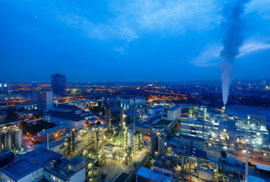Borealis to invest EUR80 million in Linz location

Austrian chemicals firm Borealis is pumping in a new round of investments in its melamine and fertiliser production facilities in Linz, Austria. The heart of the so-called “Linz 2020” programme is a EUR80 million investment package to boost the overall long-term competitiveness of the Linz location. Programme goals include improving plant efficiency and achieving better environmental performance by installing and implementing state-of-the art equipment and processes.
This latest round of investment follows on the heels of the “Linz Fitness” programme, in which EUR145 million was invested in plant modernisation between the years 2010 and 2014. Building on these modernisation measures, a variety of additional upgrades are scheduled for completion by 2019. Most are infrastructure-related and will be carried out in the Linz Chemical Park, such as modernisation of the facility’s railway, including railway control systems, and installation of state-of-the-art lighting. Utility upgrades to the cooling water system and pipe racks will ensure reliable service in the long term to both Borealis and its Linz Chemical Park site partners.
The renovation and upgrade of Borealis’ own fertiliser storage facilities includes the replacement of ageing equipment that, among other things, will help further reduce dust emissions and enhance overall energy efficiency.
“Linz is already a role model for other Borealis fertiliser facilities when it comes to production reliability and performance,” explains Mark Garrett, Borealis Chief Executive. “What is more, it is also a crucial component of our global growth strategy in fertilisers. ‘Linz 2020’ is a four-year investment programme which will result in enhanced competitiveness now and many years down the road.”
The largest Borealis fertiliser production facility in Europe is in Linz, which is also the centre of melamine production. In addition, around 50,000 tonnes of melamine per year are produced at two plants located in the Linz Chemical Park. Major base chemicals produced here include ammonia, nitric acid and urea as well as NPK (nitrogen, phosphorous and potassium) and CAN (calcium ammonium nitrate) fertilisers.
(PRA)Copyright (c) 2016 www.plasticsandrubberasia.com. All rights reserved.









































